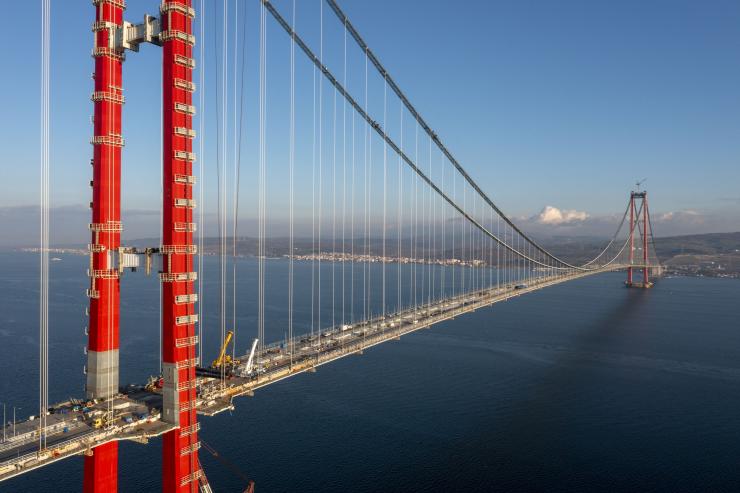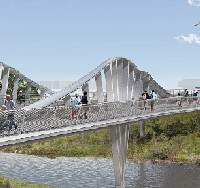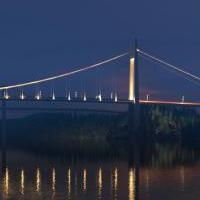The 1915 Çanakkale Bridge has a span of 2,023m. It becomes the new holder of a record held since 1998 by Japan’s 1,991m-span Akashi Kaikyo Bridge.

Above: Photo supplied by Limak
The new bridge is also claimed to be the tallest suspension bridge in the world, with a peak of 334m.
The length of the main span symbolises the 100th anniversary of the Republic of Turkey, while the tower height of 318m above sea level symbolises the Çanakkale Naval Victory on 18th March 1915 - a critical date in the Turkish nation’s battle for independence.
The total length of the bridge is 4,608m, including side spans of 770m each and approach viaducts of 365m and 680m.

Above: Photo supplied by Limak
The Turkish Ministry of Transport & Infrastructure’s General Directorate of Highways (KGM) is the client for the public-private partnership scheme. Cowi designed the bridge, with independent design verification conducted by Arup and AAS-Jakobsen.
The project investors are DL E&C (South Korea), Limak (Turkey), SK Ecoplant (South Korea), Yapi Merkezi (Turkey) and the contracting team, DLSY JV, is made up of DL E&C, Limak, SK Ecoplant and Yapi Merkezi.
Limak Group chairwoman Ebru Özdemir said: “Speaking on behalf of Limak, I feel incredibly proud of this engineering achievement. Not only will the Çanakkale 1915 Bridge make travelling and commuting much easier, it will also act as a symbol of the unity between East and West for future generations.”
Construction took four years and the total investment cost is about US$2.8 billion.
An orthotropic steel deck with twin box girder sections was chosen for its high wind resistance.
The tower foundations stand on the seabed at -45m on the Asian shore and at -37m on the European shore. As part of the soil improvement works, 165 steel piles of 2.5m diameter were driven for the Asian tower foundation, and 203 for the European tower’s foundation.
The bridge over the Sea of Marmara has been built to slash travel times across the Çanakkale Strait from up to five hours to just a few minutes.




